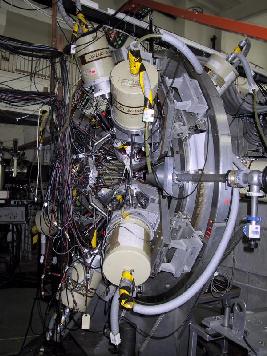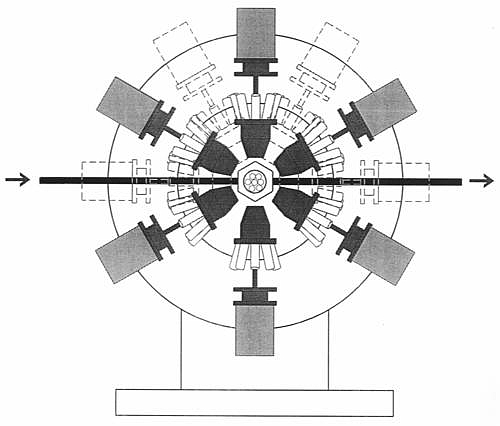

















Other experimental set-ups: IGISOL CUDAC JANOSIK CUP Si Detectors BARRIERS SYRENA ICARE EAGLE In-beam spectroscopy experiments with OSIRIS-IIContact person: Jan Kownacki, jko(at)slcj.uw.edu.plOSIRIS-II is a multi-detector system intended for use in research with ion beams from accelerators. It is a modular and thus flexible system that can be modified and changed to fulfill the requirements of many in-beam spectroscopy experiments. Primarily the OSIRIS project was started in the middle of 80-ties in Germany at KFA-Julich and after a very fruitful period of experiments it was decided that part of the Osiris detectors will be moved for the experiments at the Warsaw cyclotron. The OSIRIS-II collaboration according to the Cooperation Agreement between Forschungszentrum Julich GmbH and the Warsaw University aims at in-beam studies of a broad range of nuclei at low, medium and high angular momenta, using gamma-ray, charged particles, electron and neutron detection facilities at the Warsaw Cyclotron. The OSIRIS-II array consists of 12 HPGe detectors equipped with anticompton BGO shields, a gamma-ray multiplicity filter with 48 BGO elements in a 4pi geometry, one 4-sector HPGe polarimeter, Plunger and a 30 elements SiBall (light charged particles filter). A conversion electrons transport system comprising permanent magnet ring segments made of Nd-Fe-B is being prepared for the in-beam tests.
Click here for a report on the lifetime measurements and studies of chirality with OSIRIS-II. A page on other research done by using the same set-up, namely gamma spectroscopy of light Sn isotopes, is also available.
|




